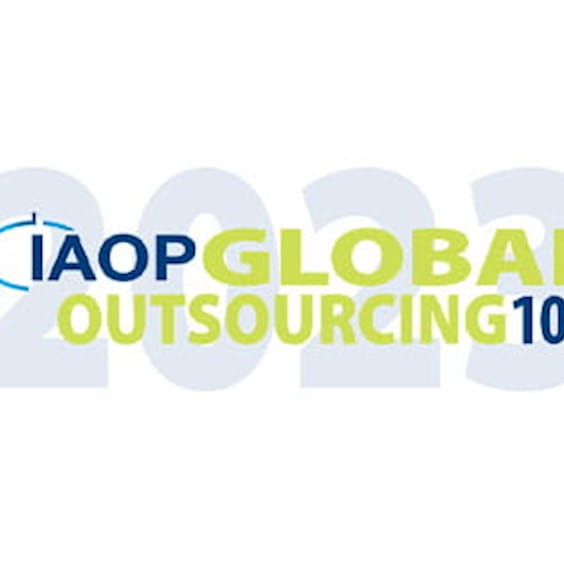How outsourcing can improve the employee experience
Using outsourcing to manage market fluctuations can actually drive employee satisfaction—if you follow key best practices
Download the PDFOutsourcing. It’s often viewed as a “boogeyman” by employees who fear their livelihoods could be on the chopping block as organizations seek to shift work to third parties in an effort to cut costs.
But as profitability pressures mount in today’s slow-growth economy—and outsourcing becomes an increasingly useful lever for business leaders to pull—it’s crucial that companies proactively address employees’ concerns and allow them to see the many benefits (beyond just cost savings) that outsourcing can provide.
An economic environment ripe for outsourcing
Today’s uncertain economic landscape has triggered a shift from the past decade’s “growth-at-all-costs” mindset—including expansive hiring—toward one more focused on profitability and on having an agile workforce strategy that allows your business to adjust quickly to market fluctuations.
Companies are also grappling with increased salary costs as they compete for skilled talent in a high-inflationary environment. Job openings remain high compared to pre-pandemic levels, with more than 1.5 times as many openings as there are unemployed job seekers. The work simply needs to get done, regardless of who performs it.
In other words, economic conditions are ripe for outsourcing and we predict organizations will increasingly turn to this lever to fill gaps. But how do you avoid alienating employees who may view outsourcing in a negative light?
What are the key benefits of outsourcing—from the employee’s perspective?
A business leader’s challenge: Gaining buy-in and engagement from your workforce around outsourcing to the extent that they not only find it acceptable, but turn into advocates for it because of how it benefits their own job satisfaction and careers. When that happens, a force multiplier can take effect.
Outsourcing relieves talent challenges in a tight labor market, while giving existing employees new opportunities.
Outsourcing work can alleviate the pressures of hiring in today’s labor market. This is especially true seeing as providers have massive global footprints that give access to talent and skills that most companies, on their own, simply do not have. In the process, outsourcing can improve job satisfaction and engagement among existing employees by offloading rote tasks—or relieving elongated to-do lists—and creating new opportunities for workers to take on more strategic, higher-value responsibilities.
Outsourcing can add entirely new capabilities and subject matter expertise—and improve employee engagement.
Third-party providers can offer specialty skill sets that would take organizations significant time and investment to develop themselves—from access to new digital tools and artificial intelligence platforms to deep subject-matter expertise. In fact, some managed service providers are working to create entirely digital operating models that they can apply within their clients’ environments.
Importantly, adding these capabilities can improve the employee experience by giving existing workers exciting new tools and insights that can help them do their jobs better—as well as new avenues for growth, advancement, and skill development.
Outsourcing helps companies grow profitably, which in turn benefits existing employees.
Despite today’s profitability imperative, companies are still under significant pressure to grow and scale.
But that expansion can’t involve proportionate additions to human resources, finance, IT, and other support functions. That’s where outsourcing—as well as automation and other strategic workforce optimization levers—can play a role. Managed service providers do more than cut down on expenses. They can also help stabilize those costs over time by managing the highs and lows of certain workforce demands. For example, during open enrollment, more HR professionals are needed—but that demand would lessen during less busy periods.
Business leaders also should communicate to their employees that this stability can pay dividends for them by, for instance, improving job security or allowing organizations to continue delivering benefits that employees need. In other words, when the company does well, so will its employees.

A healthcare client wanted to cut IT costs without disrupting operations and gain insight into contingent talent spending. Discover how West Monroe transformed their IT approach.
Read MoreThree best practices for successful outsourcing
There are numerous outsourcing “myths”—the leading one being it must have a negative impact on existing employees. Others involve the notion you can outsource everything, or the idea that once you’ve outsourced a function to a vendor, your job is done.
The following best practices help debunk these myths and point business leaders toward outsourcing success.
1. Understand your business goals and appetite for outsourcing.
It can be tempting when meeting with an outsourcing provider to want to take them up on everything they offer. But it’s critical for business leaders to start from their perspective rather than from that of their providers:
- What do you want to get out of this relationship?
- What are your business goals and how does (or doesn’t) outsourcing align with or enable those?
- How ready are you to manage the change and successfully operate if a function is outsourced?
Any successful relationship will be predicated on a mix of business objectives and how employees may be affected. Understanding what those goals are and your company’s culture is key—as is effective governance of the outsourcing relationship over time.
2. Keep employee experience front and center.
Successful outsourcing depends on effectively engaging and supporting existing employees as they navigate the transformation. This starts at the top—with executive alignment on the strategy underpinning the outsourcing crucial to avoid pockets of resistance.
Meanwhile, when routine tasks are outsourced, it results in a redistribution of retained activities among employees. This means both new activities and a greater concentration of higher-level ones: in finance, for instance, it might involve handling complex analyses or escalated engagements with suppliers or customers. Employees may not be immediately equipped to handle these responsibilities, so it's vital to provide training to ensure people are comfortable with their new roles.
3. Invest in vendor management.
As a business leader, you can’t expect to engage a third-party provider and wash your hands of it. That’s where vendor management comes in. In this respect, organizations should consider the following:
- What is our shared vision for what a successful relationship looks like?
- Do you have established service-level agreements and key performance indicators to measure and track success?
- What pre-conditions must be met by you, the client—and are you prepared to invest in meeting them?
- From a governance perspective, who on your team will be responsible for managing the relationship? And do they have the skills necessary to manage performance through a third-party at the overall relationship level as well as at the operational level?

A global consumer products company wanted to strategically optimize and consolidate its IT vendor landscape. Here’s how West Monroe helped them get there.
Read MoreOutsourcing: A critical lever for today’s businesses
There’s a reason demand for outsourcing continues to grow: Companies are under pressure to scale, the talent market is tight, and outsourcing has a proven track record of significantly lowering costs.
When done well, the benefits extend far beyond cost savings. Outsourcing can also boost engagement among existing employees by allowing them to work on more strategic tasks, while adding entirely new capabilities to your business’s arsenal.
At West Monroe, we have a proven methodology for driving these results. Our Strategic Workforce Optimization model combines proprietary talent analytics with a multidisciplinary lens—including industry, human capital, operational productivity, and outsourcing expertise—to determine the most appropriate and cost-effective talent mix for the specific activities within your operations.
Outsourcing may sound like a dirty word to some. Now is the time for executives to transform that orientation—and demonstrate the positive outcomes that outsourcing can bring to their employees and organizations.


